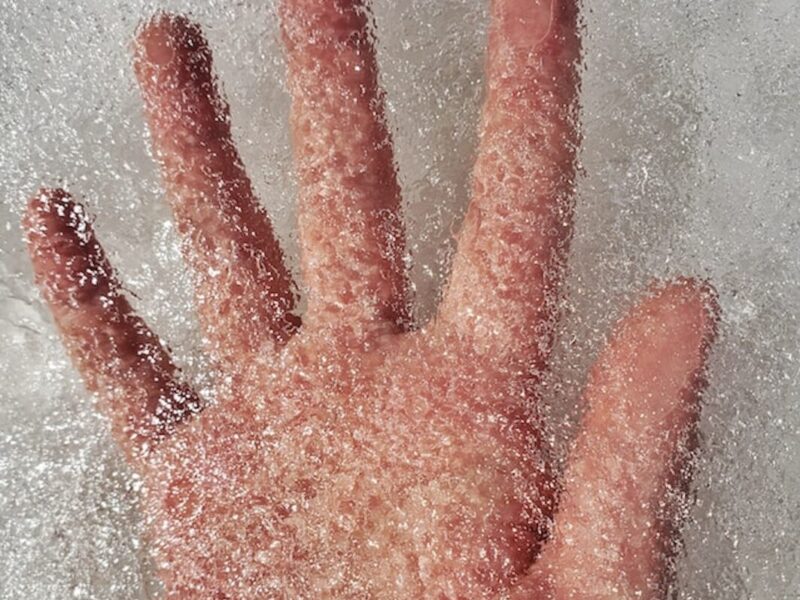Während andere im Frühling die erste Eiswaffel in der Hand halten, in ihren Jacken zu schwitzen beginnen und am Abend einen kleinen Sonnenbrand auf der Nase entdecken, trägt Matthias* Handschuhe. Auch den Rest seines Körpers hält er akribisch warm. Zu warm, würden Gesunde sagen. Doch Matthias ist nicht gesund.
Der 33-jährige Berliner leidet an einer seltenen Störung; der sogenannten Paramyotonia Congenita nach Eulenburg – einer erblichen Natriumkanalerkrankung. Nur eine Person von 180.000 Menschen in Deutschland ist davon betroffen. Die Krankheit macht es ihm unmöglich, unbeschwert durchs Leben zu gehen. Zu jeder Zeit muss er aufpassen, dass sein Körper nicht auskühlt. Temperaturen ab zehn Grad oder kälter verträgt er schlecht. So schlecht, dass seine Muskeln innerhalb weniger Minuten versteifen – manchmal nur für kurze Zeit, schlimmstenfalls über mehrere Stunden. Vor allem seine Hände verkrampfen sich, werden fest wie Beton. Ein Medikament kann ihn nicht aus seiner Starre befreien. Er muss warten, bis die Attacke auf seine Muskeln von selbst vorbeigeht. Quälend sei das, sagt er.
Kälte, Sport oder Kohlenhydrate könne Lähmungsattacken auslösen
Was steckt dahinter? Die Störung gehört zur Familie der Ionenkanalerkrankungen, zu der auch die Hypokaliämische periodische Paralyse (HypoPP) zählt. Die HypoPP hat viele verschiedene Gesichter und zeigt sich immer anhand von Lähmungsattacken. Auslöser kann nicht nur Kälte sein – manche Betroffene müssen sich vor Kohlenhydraten in Acht nehmen, vor Sport oder zu viel Alkohol. Ja, sogar die eigenen Ängste können Erkrankte im wahrsten Sinne lähmen. Im schlimmsten Fall liegen Betroffene stundenlang gelähmt im Bett. Etwa die Hälfte der Patient:innen entwickeln mit zunehmendem Alter einen Muskelschwund mit Gehbehinderung. Häufig ist der Rollstuhl unausweichlich.
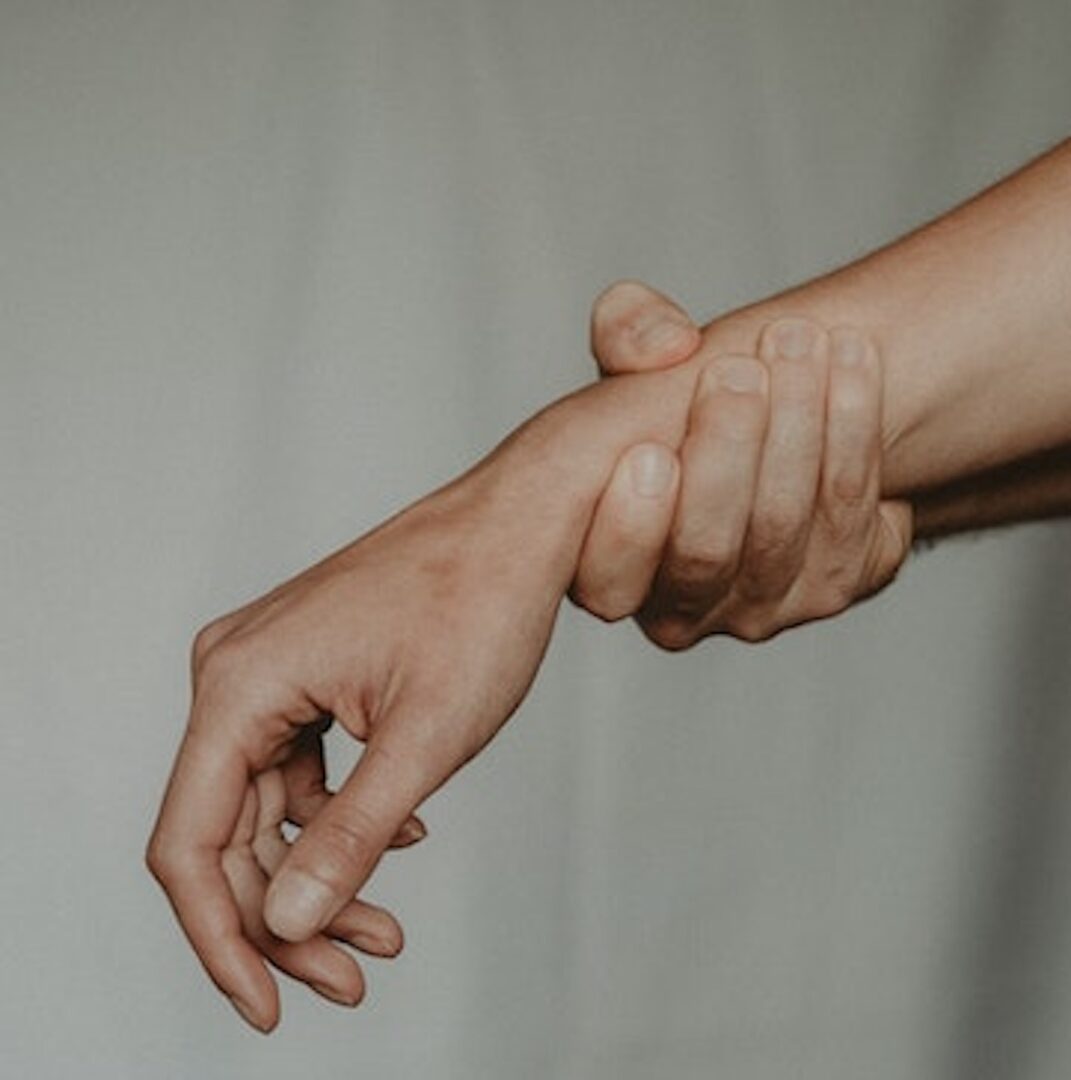

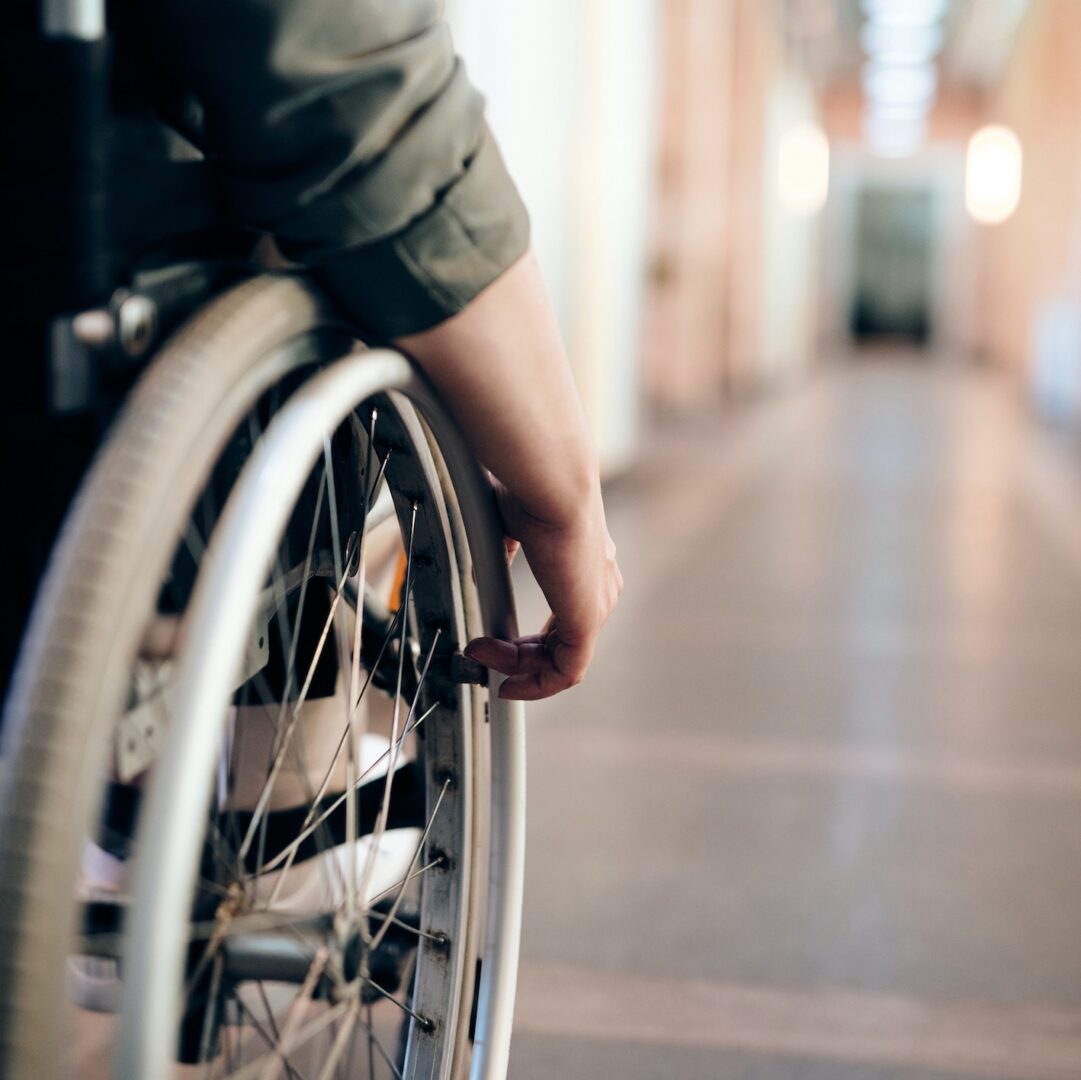
Symptome seit früher Jugend – „Konnte den Knopf meiner Hose nicht öffnen“
Bei Matthias ist also die Kälte der Feind. „Schon als kleiner Junge konnte ich nach Fußballspielen bei frischen Temperaturen meine Schuhe nicht mehr allein ausziehen oder den Knopf an meiner Hose öffnen“, erinnert er sich. Die Muskulatur seiner Hände war steif geworden. Er konnte die Finger nicht mehr strecken. Auch auf dem Fahrrad spürte er oft, wie seine Hände sich fest um den Lenker schlossen, mit ihm zu verschmelzen schienen. Die Hand zu lösen? Hoffnungslos. Matthias musste lernen, es auszuhalten. Heute ist er Experte für seinen eigenen Körper. Er weiß, was geht – und was nicht. Hallenbäder und Seen sind tabu für ihn; genauso wie ein Stadionbesuch bei kühlen Temperaturen. Auch bei der Berufswahl war Matthias von Anfang an eingeschränkt. „Alles, was stark von der Feinmotorik der Finger abhängt, musste ich ausschließen“, sagt er. Chirurg, Musiker, Handwerker hätte er niemals werden können – glücklicherweise wollte er es gar nicht. Matthias ist naturwissenschaftlicher Doktorand an einem Forschungsinstitut in Berlin. Aufpassen muss er, wenn er dort mit Pipetten, Pinzetten oder Scheren hantieren muss. Dann fährt er nicht mit dem Rad, sondern nimmt die Bahn, um die Hände vor dem Wind und Auskühlung zu schützen.
Krankheit wird oft verkannt – viele Betroffene werden zum Psychiater geschickt
Matthias hat seine Strategien, um mit der Krankheit zurechtzukommen. Gelernt hat er das von seinem Vater. Auch er leidet unter der seltenen Krankheit, die zu Zeiten seines Militärdienstes bei ihm diagnostiziert wurde. Auch Matthias‘ Großmutter, sein Onkel und sein Cousin sind betroffen. Eine Heilung gibt es nicht.
Woher kommen die Muskelattacken? Was passiert im Körper, dass sich die Muskeln derartig verkrampfen? Die Ursache dafür entdeckte Privatdozentin Dr. Karin Jurkat-Rott, Physiologin am Institut für Angewandte Physiologie an der Universität Ulm.
„Die Muskeln werden bei der Hypokaliämischen periodischen Paralyse durch einen Abfall der Kaliumkonzentration im Blut gelähmt“, erklärt sie. „Wenn sich das Kalium im Blut wieder normalisiert, lösen sich die Muskelkrämpfe auf.“ Es sei wie ein Spuk, der kommt und geht. Deshalb werde die Störung häufig verkannt. Betroffene würden oft zum Psychiater geschickt – obwohl sie einen Neurologen bräuchten.
MRT-Untersuchungen brachten Licht ins Dunkel
Wie kann man Patient:innen helfen? Was lässt sich tun gegen den Abfall der Kaliumkonzentration im Blut? Karin Jurkat-Rott wollte eine Antwort finden und forschte weiter – gemeinsam mit Professor Dr. Marc-André Weber, Direktor des Instituts für Diagnostische und Interventionelle Radiologie, Kinder- und Neuroradiologie an der Universitätsmedizin Rostock. Sie untersuchten Betroffene mithilfe von Kernspintomographien (MRT) und stellten bei ihnen Natrium- und Wassereinlagerungen fest. Auch Matthias nahm an den Studien teil. Eines seiner Beine wurde dafür mit Hilfe von Eis heruntergekühlt, gleichzeitig musste Matthias seine Beinmuskeln beanspruchen. „Muskelarbeit und Kälte sind ein maximaler Trigger“, erklärt er. In diesem Zustand fand die MRT-Untersuchung statt. Die Wissenschaftler:innen hatten dadurch den Seitenvergleich: Die Darstellung des nicht heruntergekühlten Beins und des gekühlten Beins. Im gekühlten Bein war die erhöhte Natriumeinlagerung auch bei Matthias zu sehen.
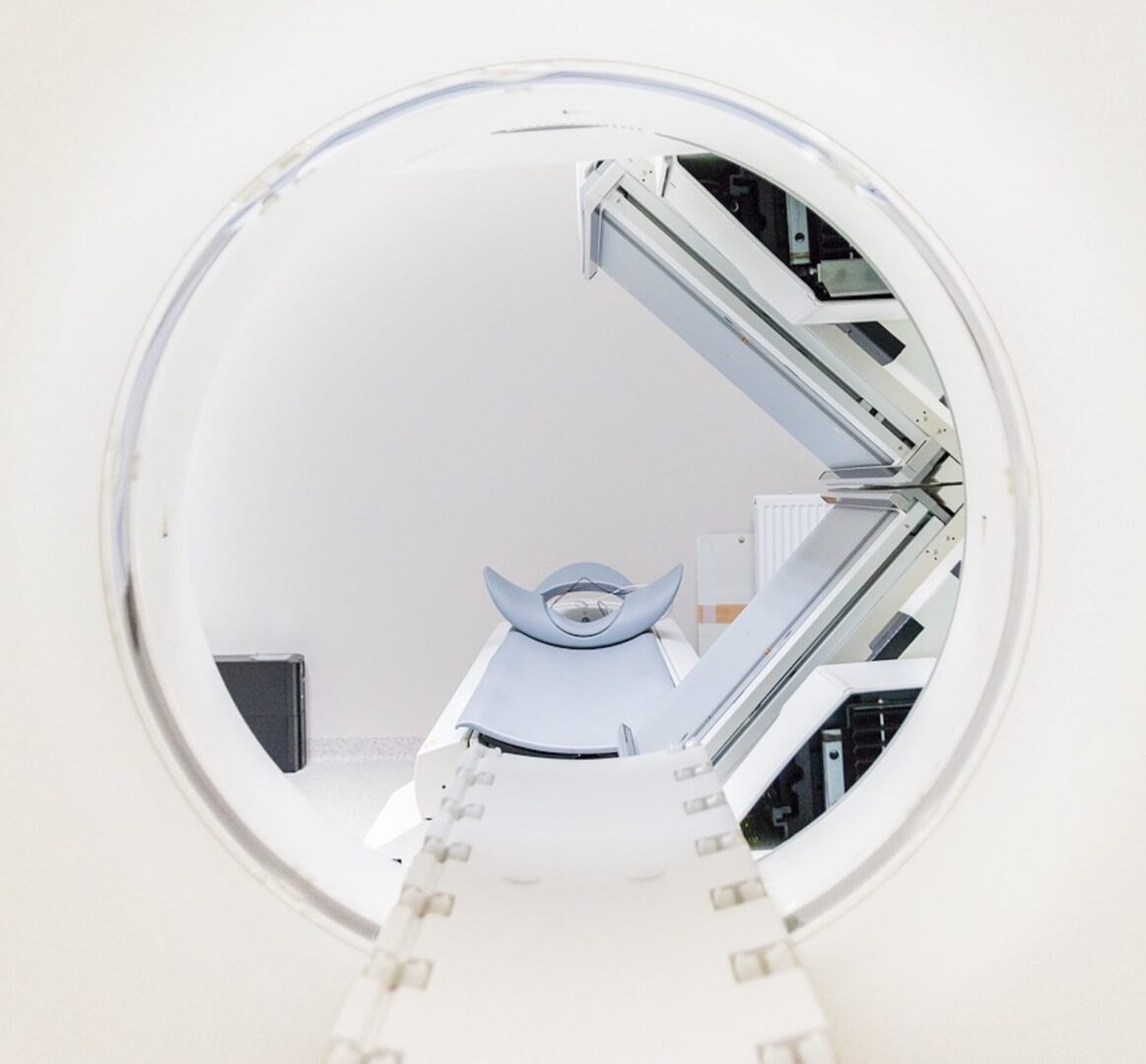

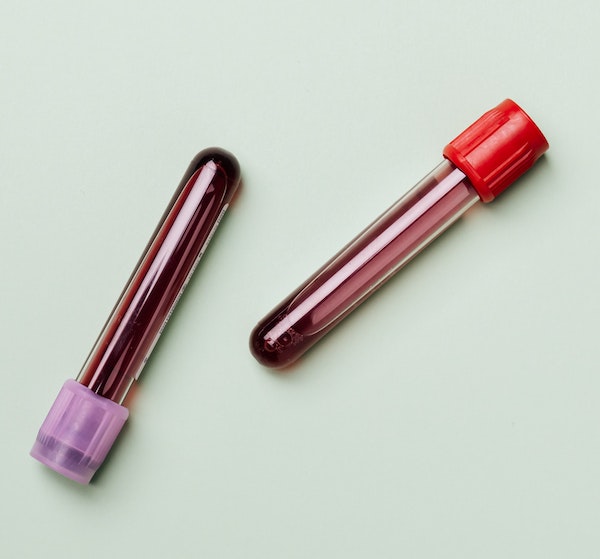
Wassertabletten helfen, Symptome zu lindern
Um das Gewebe zu entwässern und das Kalium im Blut zu erhöhen, verabreichten die Forscher:innen im Rahmen eines individuellen Heilversuchs zwei Patientinnen mit Hypokaliämischer periodischer Paralyse ein Medikament, das eigentlich zur Behandlung von Herzinsuffizienz eingesetzt wird – umgangssprachlich „Entwässerungstabletten“ genannt. Beide Patientinnen litten stark unter ihrer Erkrankung, hatten Muskelschwund und waren auf den Rollstuhl angewiesen. Die Wirkung der Medikamente war eindrucksvoll: Bei beiden Patientinnen traten die Lähmungen nicht mehr auf. Ihre Muskelkraft verbesserte sich zudem so stark, dass sie wieder selbstständig laufen konnten.
Für den neuen Therapieansatz erhielten die beiden Wissenschaftler:innen im Jahr 2010 den Eva Luise Köhler Forschungspreis für Seltene Erkrankungen. Doch damit endeten ihre Bemühungen nicht, Betroffenen zu helfen. Die beiden Wissenschaftler:innen verwendeten das Preisgeld, um die Bedeutung des Kaliums, Natriums und Chlors bei Muskelerkrankungen noch besser untersuchen zu können. „Es gibt eine Vielzahl an Muskelerkrankungen“, sagt Professor Marc-André Weber. „Wir erhoffen uns, dass wir auch für sie weiter Therapiemöglichkeiten entwickeln können.“
Ziel für die Zukunft: Die Wirkung der Medikamente noch genauer zu testen
Dazu sei es nötig, nun auch die Verteilung von Chlorid im Blut und in den Muskelzellen zu bestimmen. Möglich ist das mit hochmodernen Magnetresonanztomographen, die mit dem Preisgeld der Eva Luise und Horst Köhler Stiftung für Menschen mit Seltenen Erkrankungen mitfinanziert wurden. „Mit diesem Verfahren haben wir die Möglichkeit, die Wirkung verschiedener entwässernden Medikamente bereits nach sehr kurzer Therapiedauer zu überprüfen“, erklärt Professor Marc-André Weber.
Matthias kann glücklicherweise bisher auf die Medikamente verzichten – sie sind aber eine Option, wenn er weiß, dass er der Kälte nicht entfliehen kann. Er selbst hat sich mit seiner Krankheit arrangiert – und lässt sich von ihr das Eisessen im Frühling nicht nehmen. „Meine Zunge kann dadurch kurz ein wenig gelähmt werden“, sagt er. „Aber das geht vorüber.“ Für Menschen, die es härter getroffen hat, wünscht er sich, dass die Wissenschaft weiter vorankommt. Professor Marc-André Weber und Privatdozentin Dr. Karin Jurkat-Rott tun jedenfalls alles dafür.
*Name von der Redaktion geändert
